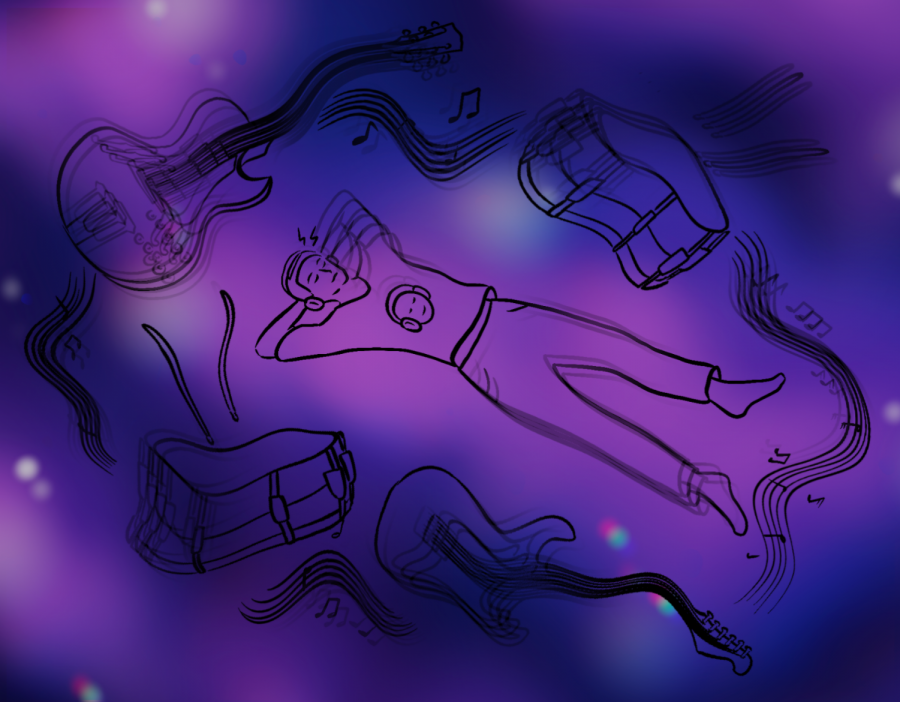Five Minutes To Make You Love Nujabes and J Dilla
February 26, 2021
On February 7, 1974, two hip hop icons were born. They lived across the world from one another, never meeting, but they are both recognized as the forefathers of lo-fi hip hop. Both, unfortunately, died before the age of 40. I am talking about the wizards of the Midi Production Center (MPC): Nujabes and J Dilla. The New York Times runs a series of articles called “5 Mintues That Will Make You Love …” (here is one about classical piano). I was inspired by this format, so with five or so minutes of reading, and some listening (hopefully), I intend to make you fall in love with both Nujabes and J Dilla, just like I did.
Jun “Nujabes” Seba was a Japanese producer from Tokyo who owned two record stores and founded his own label: Hydeout Productions. He was active between 1999 and 2010, releasing 3 full length albums, and countless singles. Nujabes frequently sampled latin jazz. He was killed in a car crash in 2010.
“Aruarian Dance” is a song off the “Departure” album of the OST of Samurai Champloo, an anime which Nujabes and many of his proteges scored. It samples Laurindo Almeida’s “The Lamp Is Low.”
I have spent many nights gazing out the window with this song on repeat. Listening to the sped-up sample, the latin-jazz guitar melts into something new. Complemented by gentle hi-hats, kicks, and snares, as well as sweet violin, the sound of the beat is ethereal. It just brings me to a new place.
“Luv(sic) Grand Finale” is the final song of the “Luv(sic) Hexalogy,” a series of songs released between 1999 and 2013. Each song is a love letter to hip hop with vocals by frequent collaborator Shing02. The instrumental for “Luv(sic) Grand Finale” was found on a cellphone belonging to Nujabes two weeks after his death, and was later finished by Shing02. It samples “Choro Das Aguas” by Ivan Lins.
I’m not gonna lie, this sample flip is crazy to me. In my opinion, a lot of old records practically invite sampling, but the sampling potential of “Choro Das Aguas” is more elusive. Nujabes obviously heard something though, because just like “Aruarian Dance,” this song creates a distinct feeling of nostalgia. One thing that I’ve always admired about Nujabes is that neither drums nor lyrics ever overpower the sample. In this song, a heavily filtered sound perfectly bookends the “Luv(sic)” series, and both the original and instrumental versions are great.
“Lady Brown” is the third track off the “Metaphorical Music” album from 2003. It features vocals by Cincinnati rapper Cise Starr, and samples “The Shade of the Mango Tree” by Luiz Bonfa.
A lot of people say that the best hip hop love song is something like “Bonita Applebum” by A Tribe Called Quest, or “The Light” by Common, but I think “Lady Brown” gives them a run for their money. Although Cise Starr’s rapid-fire rhymes are what keep you listening closely, it’s the beat that makes it. Another beautiful jazz guitar sample comes alive when paired with a light yet head-nodding drum beat, and a relatively quiet bass. One thing I especially love is that the drum pattern is pretty slow which lets the beat take it’s time, in the best way.
John “J Dilla” Yancey was an American producer from Detroit. He was a member of the group Slum Village, briefly a part of a production collective called The Ummah, and one of the most prolific and revolutionary producers from the mid-1990s to the mid-2000s. J Dilla died of Thrombotic thrombocytopenic purpura (TTP) and lupus related complications in 2006 when he was 32. Three days before his death, he released his final masterpiece, “Donuts.” His Akai MPC (an essential piece of beat making equipment) is exhibited in the National Museum of African American History and Culture.
“Don’t Cry” is the 18th track off the aforementioned “Donuts” album. It samples “I Can’t Stand (To See You Cry)” by The Escorts.
“Don’t Cry” is the epitome of J Dilla’s chopping (breaking up and putting back together a sample) ability. There are no computers or digital audio workstations here, just a man and his sampler. When the song begins, the listener really doesn’t know what’s in store for them, hearing only an old soul record. At 40 seconds in, though, the tone shifts and we start hearing this weird, futuristic but catchy melody; a sort of a franken-beat made up of chunks of the soul record. What is so special about this beat is the way Dilla made it. He took a collection of individual drum sounds that had pieces of melodies on top of them, and played a beat whilst creating a new melody. A lot of people don’t know of the difficulty behind said work, but there aren’t many songs like this, so that should mean something.
“Dreamy” is the 6th track off “Vol. 2: Vintage.” It was also used for a remix of D’Angelo’s “Me And Those Dreamin’ Eyes Of Mine.” The song samples “The Colorado Trail” by Dave Grusin.
Although “Jay Dee’s” later works are also amazing, early J Dilla just affects me more. It may be simpler and not as experimental, but he was still producing with his signature flair. More than any Nujabes work, this beat is about the drums and bass. The punchy snares and hi-hats lay a foundation for the beautiful, dreamy sample. The “ba-dum, ba-dum” of the bass makes the sound ever fuller. In my mind, this song embodies a cool summer night.
“Ahmad Impresses Me” is the 3rd track off “The What Up Doe Sessions (1996)” which is really more of a beat tape than an album. That same year, Mr. Walt of Da Beatminerz produced a track called “Changes” for Shadez of Brooklyn. The beats are almost identical, but each artist took a slightly different take. The track samples “The Awakening” by Ahmad Jamal, who the track is a tribute to and “Don’t Have To Shop Around” by The Mad Lads.
I really never get tired of this record. Although there are essentially two versions of this beat, I like J Dilla’s better because it is cleaner and has a better bassline, which is a key difference. The bassline and the melody come from different pieces, but here Jay Dee was able to seamlessly meld them together into a perfect track, with the heavy swinging drums anchoring the song. This song has two distinct sections, and was probably meant for an emcee, but alas it never found one. Instead, it is simply a superb chillout beat, sampling some of the greatest jazz ever.










